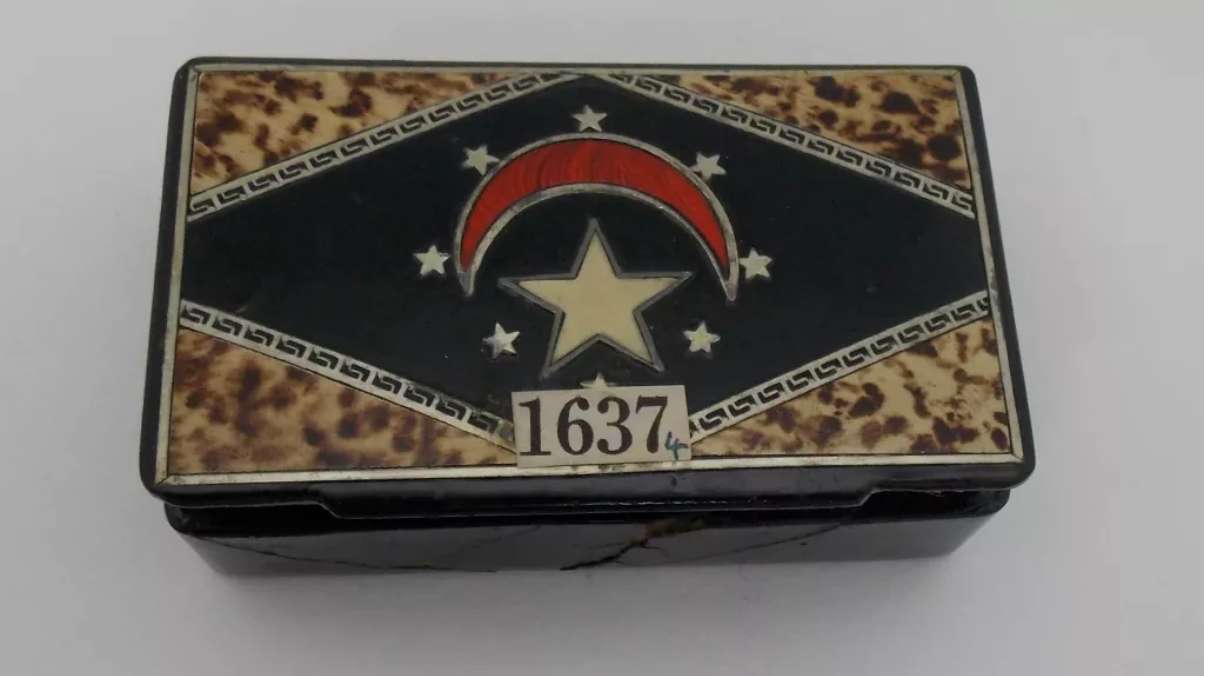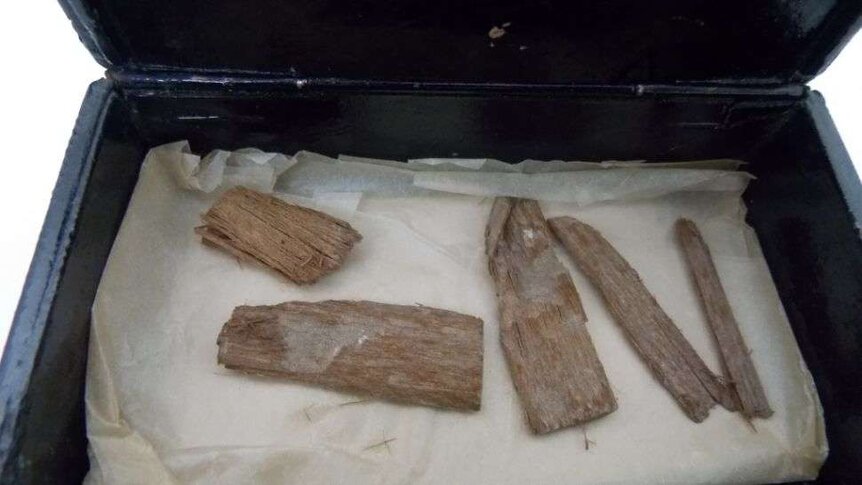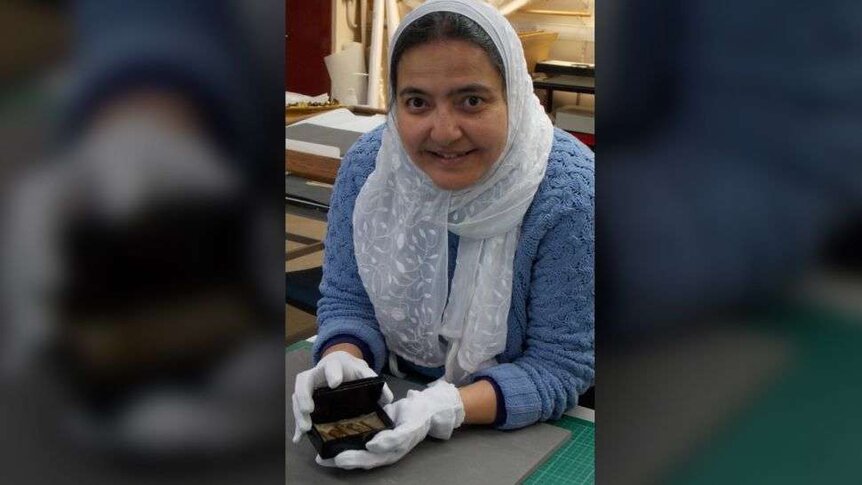Create a free profile to get unlimited access to exclusive videos, sweepstakes, and more!
Rare Great Pyramid artifacts lost for 70 years found in Scottish cigar box

Never let it be said that there aren't multitudes of minor miracles still occurring in the world, regardless of the season.
In keeping with that spirit, researchers at Scotland's University of Aberdeen Museums (UAM) have recently uncovered an innocent-looking cigar box lost for 70 years and holding rare artifacts procured from Egypt's Great Pyramid of Giza way back in 1872.
When the lid was lifted, museum curators discovered a small collection of five ancient cedar pieces taken out of that Wonder of the World during a 19th century expedition into its mysterious depths.
In a stroke of good fortune, curatorial assistant Abeer Eladany was apparently going through objects in a packed storage room inside the museum's Asia Collection at the end of last year when she stumbled upon a colorful box that definitely was out of its element. Her first clue was that the box's top was emblazoned with a symbol of the former flag of Egypt.
This plain handful of splintered wood represents one of only three objects ever to have been obtained from the Queen's Chamber. It's believed to have been left in the tomb when the pyramid was constructed approximately 4,500 years ago and could have been the handle or part of a hand tool used in building the epic monument.
"I couldn't believe it when I realized what was inside this innocuous-looking cigar tin," Eladany said in an official statement.
"Once I looked into the numbers in our Egypt records, I instantly knew what it was, and that it had effectively been hidden in plain sight in the wrong collection. I'm an archaeologist and have worked on digs in Egypt, but I never imagined it would be here in northeast Scotland that I'd find something so important to the heritage of my own country."
According to Neil Curtis, head of museums and special collections at the University of Aberdeen, radiocarbon dating revealed that these cedar chunks were even older than the Great Pyramid itself, and date back to circa 3341 B.C. to 3094 B.C., prior to Khufu's reign and the Great Pyramid's erection by nearly 500 years.
Created in honor of Khufu, the Egyptian pharaoh who ruled roughly around the year 2500 B.C., the Great Pyramid lords over the Necropolis of Memphis, just south of Egypt's Giza Plateau. It's the grandest of the group of three famous pyramids and was engineered from over 6 million tons of limestone, 8,800 tons of granite, and 550,000 tons of mortar. Despite thousands of years in the harsh elements, it still stands at 455 feet tall, losing just 26 feet since its completion.
During a 1872 survey of the Great Pyramid, British engineer Waynman Dixon removed three objects from the Queen's Chamber: a piece of cedar, a ball and a hook. This rare trio of specimens became known as the "Dixon relics." The ball and hook were eventually displayed at The British Museum, where the wood fragment came inot the possession of a Dr. James Grant, who aided Dixon during the survey. Records indicate that Grant's daughter donated the five-inch fragment of cedar to the University of Aberdeen in 1946.
"This may be because the date relates to the age of the wood, maybe from the centre of a long-lived tree," Curtis explained. "Alternatively, it could be because of the rarity of trees in ancient Egypt, which meant that wood was scarce, treasured and recycled or cared for over many years."
"It will now be for scholars to debate its use and whether it was deliberately deposited, as happened later during the New Kingdom, when pharaohs tried to emphasize continuity with the past by having antiquities buried with them."

















